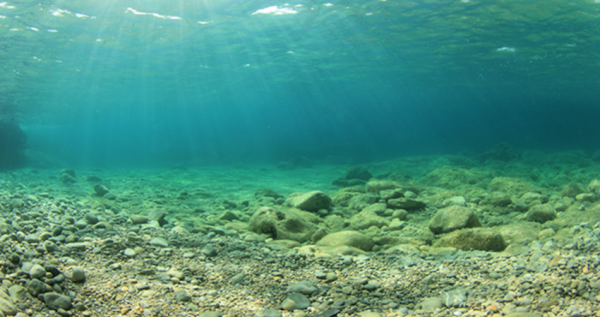From the heights of the ozone layer to the depths of the ocean, greenhouse gas emissions have far reaching impacts and damage natural systems in often unexpected ways.
A recent study conducted by McGill researchers found that the seafloor is rapidly dissolving due to manmade CO2 emissions, with particularly notable effects in the northern Atlantic and near the Southern Ocean.
The seafloor is covered by layers of sediment that contain the mineral calcite (CaCO3), which is formed from the remains of plankton and corals. Calcite combats ocean acidification by neutralizing CO2, a compound which lowers the pH of seawater when dissolved. Additionally, calcite serves as a historical environmental record; scientists have extracted and dated core samples from the ocean floor and found that thinner layers of calcite correspond with time periods that had higher atmospheric CO2 levels. This means that the mitigation of ocean acidification comes at a high price: The dissolution of calcite is also erasing the geological record of greenhouse periods and ocean acidification episodes throughout millions of years of history.
Bernie Boudreau, a member of the research team and a professor at Dalhousie University’s Department of Oceanography, noted the importance of the geological record in predicting future climate change developments.
“Unfortunately, we cannot now predict exactly how drastic future changes will be.” Boudreau wrote in an email to The McGill Tribune. “However, if we look at the geological record of past acidification, we might be able to see what happened back then […by examining] species extinctions, temperature changes, continental flooding [etcetera] which are all recorded in past sediments. Scientists can then inform the public what happened then and what might happen in the future. So, the geological information is highly significant.”
To examine the effects of CO2 on calcite dissolution, the researchers replicated seafloor environments in the lab using information from recent databases of bottom-water chemistry, sediment surface-level currents, and the calcite content of deep-sea sediments. After comparing pre-industrial and present-day dissolution rates, the researchers found that, in the western North Atlantic Ocean, a significant portion of seafloor dissolution—between 40 to 100 per cent in certain locations—is attributable to human activity. Researchers noted increased dissolution rates at various locations in the south of the Atlantic, Indian, and Pacific Oceans.
While the destruction of the geological records is a loss for scientific history, Olivier Sulpis, a PhD candidate in McGill’s Department of Earth and Planetary Sciences, is especially concerned with the impacts on living organisms.
“If we start dissolving corals or plankton, it’s much more problematic [than just dissolving the geological record],” Sulpis said. “All the algae that live at the surface have shells made of calcite, and they are producing a lot of oxygen. That [oxygen is] useful.”
Sulpis explained that the dissolution of the seafloor is only a symptom of the larger problem: That anthropogenic CO2 emissions have reached such high levels in the first place.
“I think the important [fact to realize] is [that] we are slowly changing the chemistry of the ocean,” Sulpis said. “It’s more about CO2 than the dissolving seafloor itself. What’s scary is the fact that, because the seafloor is already dissolving in various areas of the world, it means that we have emitted enough CO2 to cause this.”
Moving forward, the researchers plan to model how seabed dissolution may evolve in potential future CO2 emission scenarios. In the meantime, their findings serve as yet another warning that humans must find a way to curb greenhouse gas emissions, since a business-as-usual approach will have devastating impacts on the ocean and its inhabitants.









